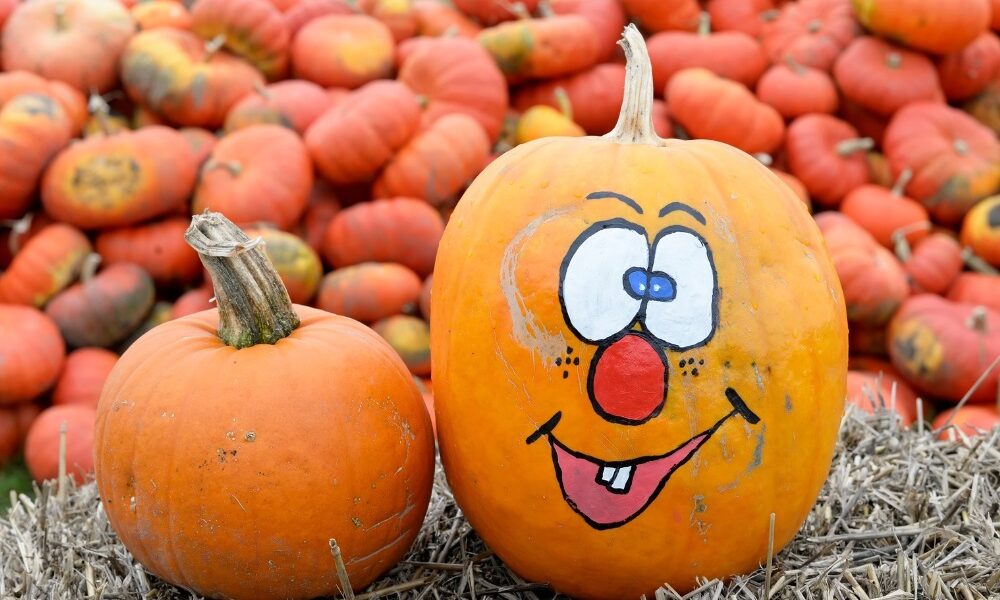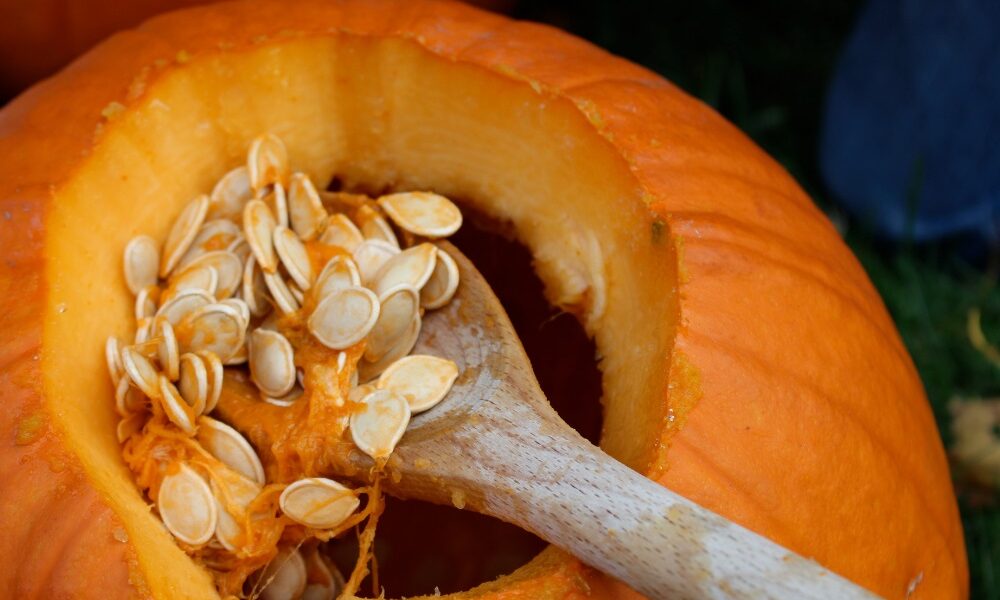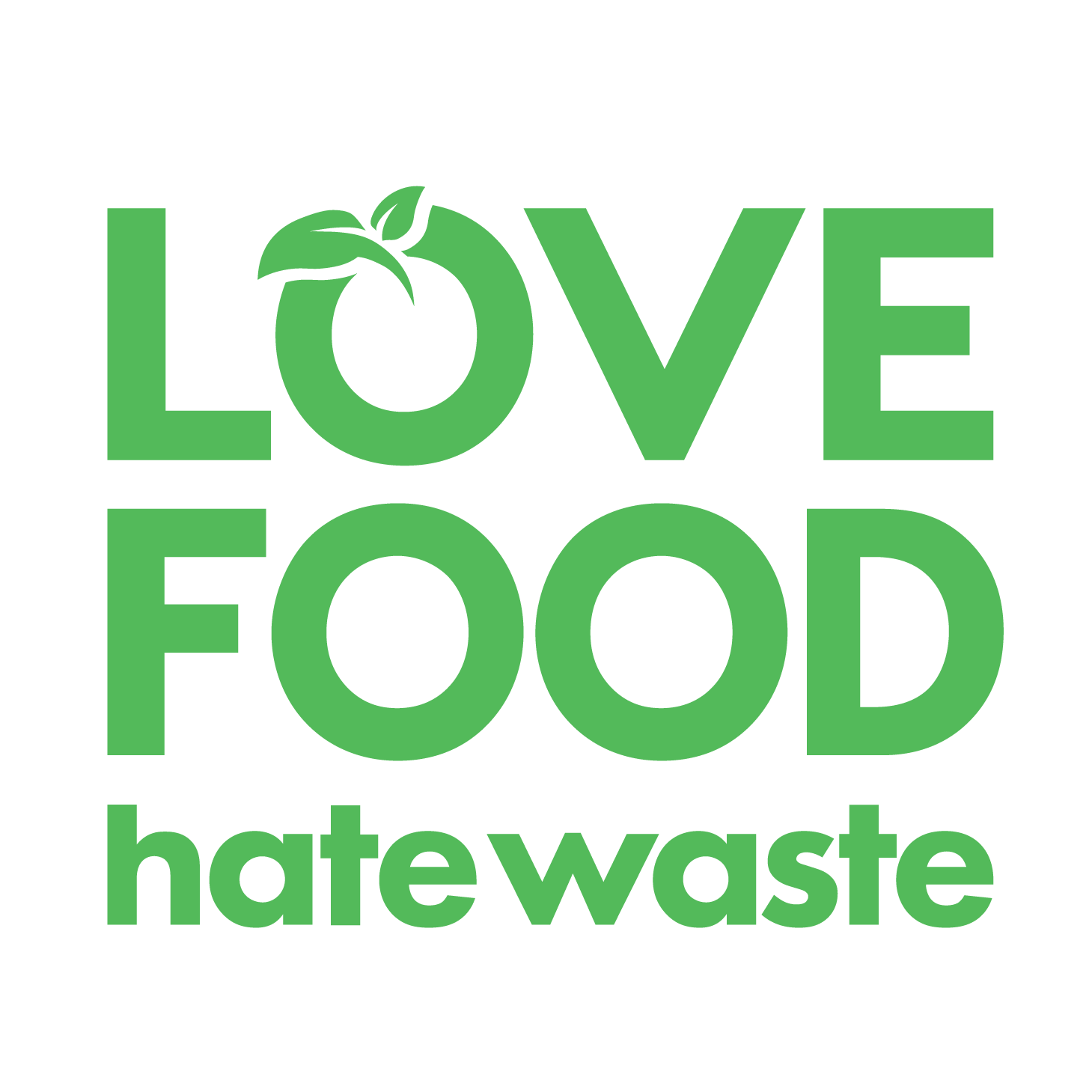Enjoying Pumpkins to Their Fullest
This time of year, we’re excited about sweater weather and pumpkin spiced lattes, but we’re also concerned about the large number of pumpkins that get tossed every year. We want to help you enjoy them to their fullest and stop the needless waste of pumpkins.
Here are answers to the most frequently asked questions we get about this fall favourite.
What should I look for when selecting a pumpkin?
For great tasting, long lasting pumpkins look for the following when buying:
• Deep, uniform colour
• Heavy for its size
• Firm, smooth skin without cracks or soft spots
• Dry stem end
• Dull rind (a shiny rind is a sign it’s underripe)
What is the best way to store pumpkins?
Keep pumpkins in a cool (10-13°C), dry space with good air circulation. Avoid the fridge as it is too cold and humid. Check and rotate regularly. Stored like this, pumpkins can last several months.
Store raw, cut pumpkins or squash in a sealed container for up to 5 days.
Store cooked or pureed pumpkin tightly wrapped or in a sealed container for 3 to 5 days.
You can also freeze cooked pumpkin for up to one year.
What is the best eating pumpkin?
Big or small, orange, white or blue, all pumpkins are edible, but some are better for cooking and baking than others. In general, larger pumpkins are more watery, less flavourful, and more fibrous.
For the best flavour, look for pumpkins labelled sugar, pie or Cinderella pumpkins. These small pumpkins are great for roasting or pureeing, and can be used in any of the sweet or savoury recipes below. If you’re visiting a farmer’s market look for other interesting varieties like the blue Jarrahdale, white Casper or Red Warty Thing. These unique pumpkins work well as decorations AND food!
Can you eat Jack o’ lanterns?
Carved pumpkins, or Jack o’ lanterns, make great decorations, but once cut and left for more than two hours they’re unsafe to eat. Compost them or give them to an animal shelter.
Remember, while you’re carving those big pumpkins, save all the trimmings, including the stringy bits and seeds to use as shown below.
PRO TIP: Want to decorate and eat your Halloween pumpkin? Instead of carving, paint the outside of your pumpkin or apply stickers.

How do you make and use homemade pumpkin puree?
- Wash pumpkin and cut into large pieces.
- Remove seeds and stringy bit and save for later.
- Place pumpkin pieces with skin attached on a large, rimmed baking sheet with 1 cm of water.
- Bake at 180°C (350°F) until fork tender, about 45-90 minutes depending on size.
- Puree using a high-speed blender to ensure the skin gets thoroughly pureed. Or, scoop flesh from skin and mash the pulp with a potato masher or immersion blender, saving the cooked skin for broth. If your puree is very watery, place in colander lined with a coffee filter or use a jelly bag to let it drain for an hour or more.
Remember, smaller sugar or pie pumpkins will produce a much more flavourful and thick puree than large field pumpkins.
Use your homemade puree in pie, smoothies, oatmeal, fruit leather, soups, pancakes, lattes and other recipes. Like apple sauce, you can use pumpkin puree to replace up to half the fat in baking recipes.
Make your own pumpkin and spice steamers and lattes! We show you how in our 5 Ways With Pumpkins.
Freeze leftover puree in convenient, pre-measured amounts as called for in your favorite recipe. Pumpkin puree is best used within one year.
Can you eat pumpkin skin?
Yes, you can! The rind or outer skin of pumpkins is safe to eat, but it can be tough. Here are four ways you to use it:
- Use it in Puree – If you have a high speed blender, the skin can be blended right into the puree. It will add extra colour and nutrients to the puree.
- Make Crispy Chips – Peel the skin before roasting into thin, random sized pieces. Cover in oil, season and bake in the oven until crisp.
- Add it to Broth – Combine it with stringy bits and water to make a pumpkin-infused broth that can be used for soups or mulled beverages.
What do you do with the stringy bits inside a pumpkin?
Have fun grabbing these gooey, stringy bits, but don’t toss ‘em! Boil with water along with any other bits of pumpkin you have to make a pumpkin infused broth. Use this broth as a base for soup along with other aromatics or mix it with mulling spices and apple cider for a warm comforting fall beverage.

How do I use pumpkin seeds?
Season and roast them as shown in Christine Tizzard’s recipe for Roasted Pumpkin (or Squash) Seeds. Once roasted the outer hull and soft seed inside make a nice crunchy snack.
Fun Fact: Unlike sunflower seeds, it’s almost impossible to crack open the outer hull of a pumpkin seed. The green hulless pumpkin seeds you buy in a store are from specially bred pumpkins that produce hulless seeds.
Favourite Pumpkin Recipes
Use your pumpkin know-how to enjoy some of these tasty recipes.
Pumpkin Soup with Apple Walnut Topping
Mini Squash (Pumpkins) Stuffed with Quinoa and Greens
Pumpkin Cheesecake Stuffed Pumpkins
Pumpkin, Prune and Chocolate Bars
Roasted Pumpkin (or Squash) Seeds


